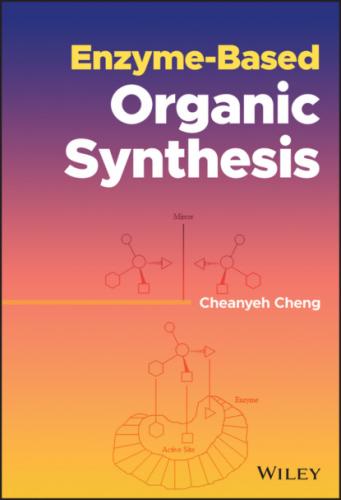Scheme 3.5 The oxidation/transamination cascade reactions for the biosynthesis of 6‐aminohexanoic acid from cyclohexanol.
Source: Based on Sattler et al. [8].
The use of organic solvent MTBE has also been applied for the production of optically pure 1,2‐amino‐alcohols such as valinol from corresponding prochiral hydroxyl ketone using ω‐TAs [9]. Chiral 1,2‐amino‐alcohols are common building blocks embedded in many synthetic and naturally occurring molecules having biological activity, and valinol is a typical example of the versatile vicinal amino alcohols. Thus, the reductive amination of isopropyl methyl alcohol ketone can be performed in MTBE using 2‐propyl amine as amino donor to yield either (R)‐valinol or (S)‐valinol by the choice of (R)‐ and (S)‐selective ω‐TAs. The use of (R)‐selective ω‐TA purified from Bacillus megaterium afforded the (R)‐valinol with an ideal optical purity (>99% e.e.), although a low conversion rate of 15%. The (S)‐selective ω‐TA originating from Arthrobacter sp. can produce the (S)‐valinol with a much better conversion rate (95%) and a perfect stereoselectivity (>99% e.e.) [10].
A pharmaceutical industrial application of the ω‐transaminase was the synthesis of antidiabetic compound sitagliptin. The synthesis protocol was the use of a stable (R)‐selective amine transaminase and DMSO/water system to perform the transamination between prositagliptin ketone and isopropyl amine that gives an excellent stereoselectivity (99.95% e.e.) [11]. Later, the synthesis protocol was modified by immobilizing the transaminase on polymer‐based resins, and the immobilized enzyme activity of the transamination was evaluated in neat organic solvent isopropyl acetate that results 91% sitagliptin production yield and >99% enantioselectivity (Scheme 3.6) [12].
The immobilized enzyme enables the use of flow reaction system to give high throughput, clean production, high enzyme stability, and excellent mass recovery. E. coli cells containing the overexpressed (R)‐selective ω‐TA from Arthrobacter and the cofactor pyridoxal 5′‐phosphate (PLP) were immobilized on methacrylate polymeric resin beads that were used for continuous flow applications to produce chiral amines continuously by asymmetric transamination of ketones using a packed‐bed reactor in organic solvent methy tert‐butyl ether (MTBE). The use of organic solvent helps in the suppression of PLP leaching from the cells. Non‐natural α‐alkoxy‐ and α‐aryl acetones were transformed under flow conditions using isopropyl amine as the amine donor with excellent enantioselectivity (>99% e.e.) [13].
Scheme 3.6 Synthesis of sitagliptin from prositagliptin ketone using immobilized transaminase in organic solvent.
Source: Truppo et al. [12].
3.2 Glycosyl‐transfer with glycosyltransferase
The glycosylation reactions play a central role in the synthesis of well‐defined carbohydrates and glycoconjugates and in the understanding of their roles and structure–function relationships in a variety of biological areas such as infections, signal transduction, cell–cell interactions, host–pathogen interactions, inflammation, immune recognition, targeting proteins to their correct destination, tumor propagation, and metastasis. The high information density coded in the sequence and linkage of carbohydrates on the molecular scale has led to an increased interest in the generation of new pharmacological agents as well [14]. Therefore, glycosylation is considered to be an important method for structural modification of compounds with useful biological activities in the pharmaceutical industries. Lipophilic compounds can be converted to hydrophilic ones through glycosylation to improve their pharmacokinetic properties. Sometimes, the attachment of a sugar moiety to a drug molecule can change its pharmacodynamics properties or obtain novel and more effective drug delivery systems (prodrugs). The applications of enzymes in sugar chemistry are indeed simple and the modification of carbohydrates by enzymes is also one of the most intensely exploited areas of enzyme applications. Especially, in the glycosylation of complex biologically active substances, enzymatic glycosylation methods are particular useful in comparison with chemical methods where generally harsh conditions or use of toxic (heavy metals) catalysts are undesirable. The enzymatic glycosylation is sometimes also superior to the synthetic chemistry for the synthesis of food additives [15].
The ubiquitous glycosyltransferases (GTs) are responsible for the synthesis of the diverse and complex array of oligosaccharides and glycoconjugates found in nature. The chemical diversity and complexity of glycoconjugates, reflecting the various chemical moieties, epimer at each chiral center, anomeric configuration, linkage position, and branching, require that the enzymes that catalyze their synthesis, degradation, and modification need to be highly specific [16]. The synthesis of most cell–surface glycoforms in mammalian systems is performed by Leloir‐type glycosyltransferases. They usually show environmental conditions sensitive and often demand special buffers or detergents for solubilization [15, 17, 18]. A large number of eukaryotic Leloir glycosyltransferases have been cloned to date [14, 19, 20] to give highly regio‐ and stereospecific with respect to glycosidic linkage formation and provide products in high yield. In addition, these enzymes exhibit substrate specificity that transfers a given carbohydrate from the sugar nucleotide donor substrate to a specific hydroxyl group of the acceptor sugar.
The worldwide example of glycosylation is the β(1→4)‐galactosylation by β‐1,4‐galactosyltransferase (β‐1,4‐GalT) as shown in Scheme 3.7 where the feedback product inhibition by the nucleoside diphosphates (NDP) has been solved by using phosphatase into the reaction to breakdown the NDP product [14, 15, 18]. The other problem associated with this glycosylation is the sugar nucleotide expense that can be a burden for large‐scale production.
However, this problem was also solved by the in situ UDP‐Gal regeneration from inexpensive starting sugar through multiple enzyme system (Scheme 3.8) [21].
Scheme 3.7 Galactosyltransferase catalyzed glycosylation with UDP‐2‐d‐Gal as donor.
Source: Based on Wohlgemuth [14]; Křen and Thiem [15]; Koeller and Wong [18].
